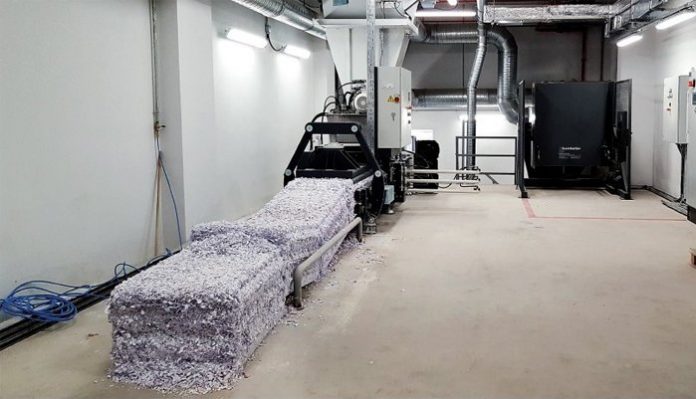
In the process of manufacturing self-adhesive labels, two kinds of waste material get generated. There is the set-up or make ready waste and the waste matrix generated during the converting process and the inspection of the rejected labels. The self-adhesive label stock consists of three layers: face stock, adhesive and the silicone coated release liner that supports the face stock. The adhesive are generally of different types or grades that may be rubber or acrylic
or silicon based. While the face stock may be paper or film based (PP, PE, PET
vinyl etc.), the release liners are mainly silicone coated paper or films.
The pain area for label manufacturers is the disposal of the waste materials as
these are non-biodegradable. The audits by our customers and third-party audits
done on their behalf tend to focus on environment issues and on waste disposal.
We have to follow certain guidelines for waste disposals. One way to do this and
to extend our support to Mother Earth is to not simply send the waste material to
and instead to pay approximately Rs. 16 per kilogram for incineration, approved
by the local pollution control Board.
However, as this practice is fairly new, we don’t get the price increase from the
customer for the labels we supply that includes any of the extra cost borne by us
for regulated waste disposal. Thus, despite paying extra for the waste disposal on
behalf of the customer and for the sake of customer retention, we are not compensated. This reduces profit margins and the label industry suffers.
Waste to wealth
The Association of Label Printers and Suppliers (ALPS) on the occasion of Earth
Day and on the 48th Anniversary of Earth Month in New Delhi announced a new
program called ‘Waste to wealth’ that addresses the label waste problem. ALPS
President, Gururaj Ballarwad said, “We have studied how to manage the waste
and earn from it. We have consulted our label stock suppliers in India as well as
many associations actively working in Europe. We have decided to start common
facility centers to manage waste initially in Delhi, Mumbai, Bengaluru and Chennai.
“Further we will take it forward to other cities where we have more than 20
members. The participating members with allotted stock quantity will send their
label waste either at a cost or free of charge. The association will charge for the
electricity, manpower and for the place which will either be constructed or rented
from the members.”
Ballarwad explained that the waste will be shredded and ground followed by
pressing and bailing. Once the process is over, the resulting energy bricks will
be sent out to the power plants, cement industry or to any industrial application where the heat requirement is more the 1100 degree centigrade. The energy
bricks can be sold at a price plus the transportation cost.
Ballarward further added, “The desired help for this project is sought from the
government for the building and for the machinery. The desired approvals by
the PCBS power ministry and Industry Ministry are also needed.” To know more
about the program, contact alpsssecy@gmail. z
Priyanka Rathi is the Executive Secretary and Head Marcom & PR, of the Association of Label Printers and Suppliers







